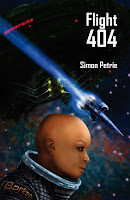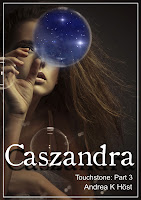Whoever said being a teenage witch would be easy? For fifteen-year-old Julie Richardson and the city’s resident protector from supernatural evil, the Left Hand Path doesn't give a damn if you've found true love for the first time in your life. There’s someone lurking the halls of Crescent Ridge High School with enough malice to unleash an epidemic of Soul Worms – supernatural larvae that feed on the very fabric of a victim’s humanity.In many ways, Student Bodies was very similar in style to Poltergeeks. There were some various additions which set it apart, however. My favourite was the new character Twyla, a First Nations girl with comparable magical strength to Julie. She has sass, a grizzly bear and a kick-arse grandfather, all of which add to the excitement of the story.
After witnessing the death of one of the most popular kids at school, Julie and über genius boyfriend Marcus are in a race against time to find out who is behind the attacks. All the evidence points to a horrifying plot at the City Weir during the Winter Solstice; the place where icy waters of the Bow River and a thunderous spillway will mean the deaths of more than a hundred of Julie’s classmates.
If she has any hope of saving their lives, she’ll need a little help from a coven of white witches and an Aboriginal mage whose snarky attitude is matched only by her magical prowess.
The other big change is that now Julie is dating Marcus, formerly her best friend. And from about half-way in I became thoroughly confused by their relationship. Not the fact that they have one, that made sense, but the way they seem to relate on various topics, particularly Julie, since she's the one whose head we're in. For example, at one point she tells Marcus to stay away so that bad guys don't kill him and then angsts about it as though she'd broken up with him. It was confusing because a) she hadn't broken up with him even though b) she'd considered doing so for his safety and this was a compromise. There was another incident near the end, which I won't spoil, that was also confusing. Teenagers!
Also, on the topic of things that annoyed me, Julie and co worked out the evil witch's evil plan, which involved the good guys trying to stop her in a predictable way, and they still went ahead and did exactly what the evil witch was expecting them to do. I don't see how that was a clever strategy at all. But anyway.
On a cheerier (sort of) note, one of the issues — as well as perceptions of First Nations people — tackled in the text is bullying. One of the students at Julie's school was bullied extensively and publicly on Facebook and in real life. It doesn't exactly deal with bullying in as much depth as it could, but that's mainly because it's busy dealing with the nefarious magic rearing its head. And it certainly doesn't trivialise bullying.
Student Bodies is fast-paced and reasonably action-packed. It was a fun read and a little bit more serious than the previous book, Poltergeeks. Fans of the prequel should enjoy it and I don't think people new to the series will have difficulty picking it up. Although I didn't enjoy it as much as the first book, I'll still be keeping an eye out for any sequels that might come along.
4 / 5 stars
First published: September 2013, Strange Chemistry
Series: Yes. Book 2 of ?. Somewhat standalone
Format read: eARC
Source: publisher via NetGalley



























